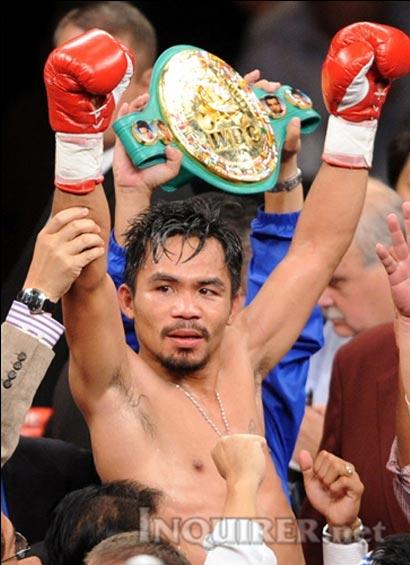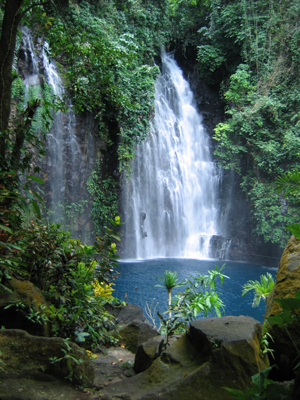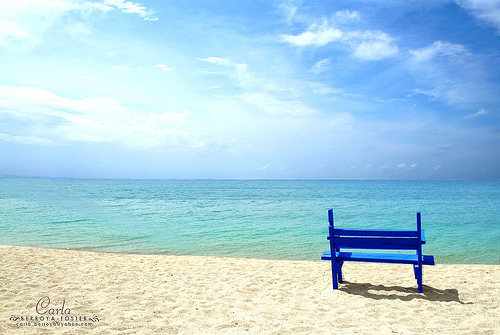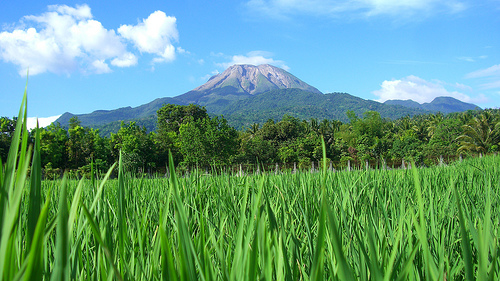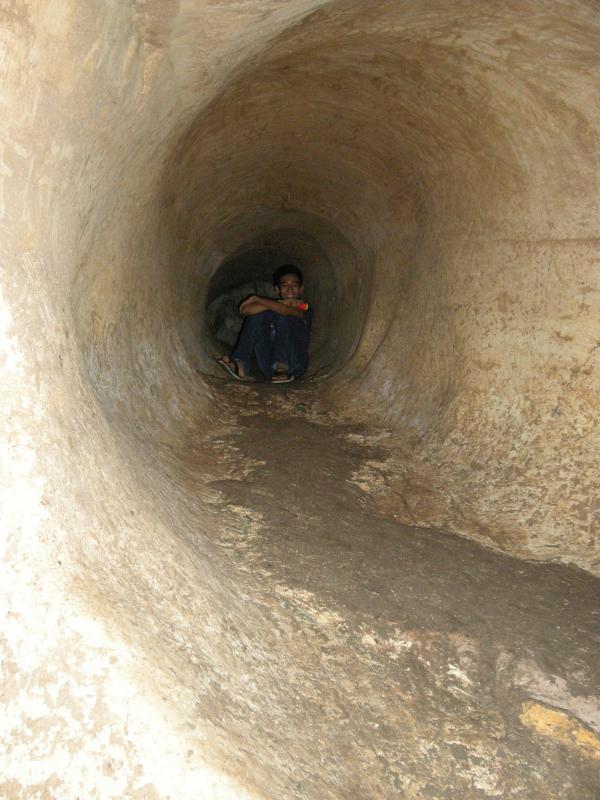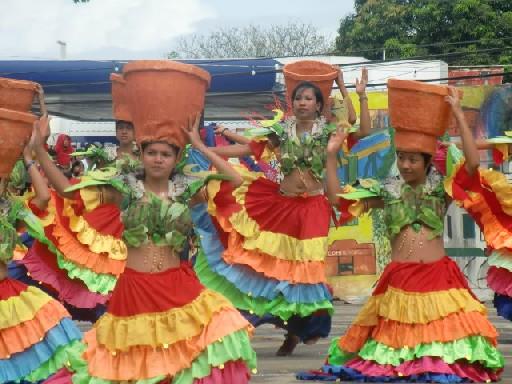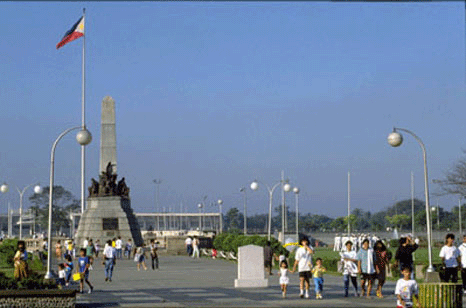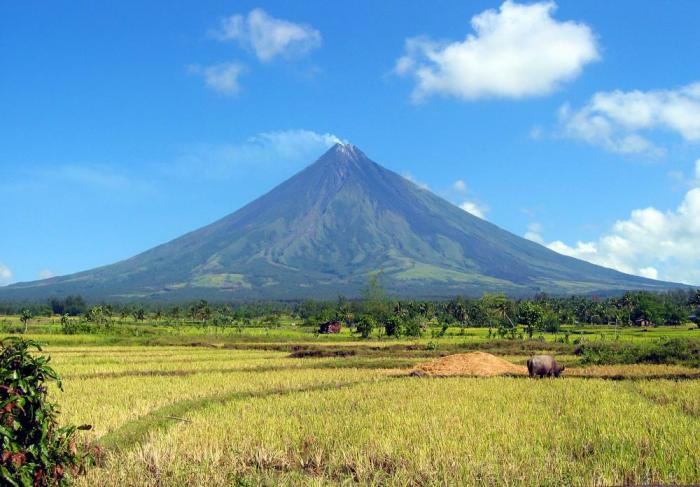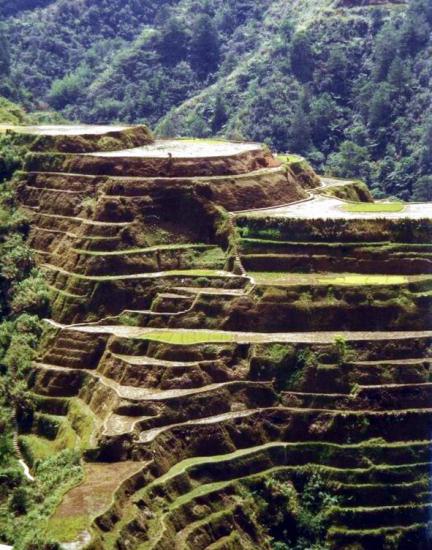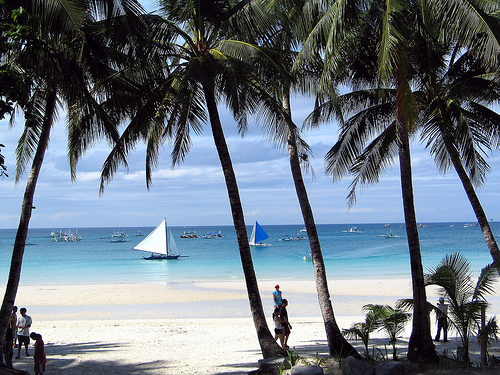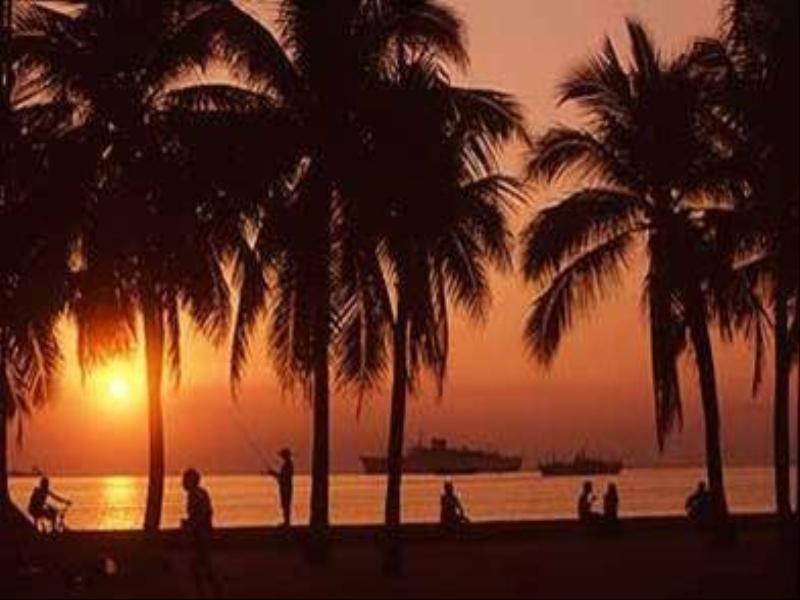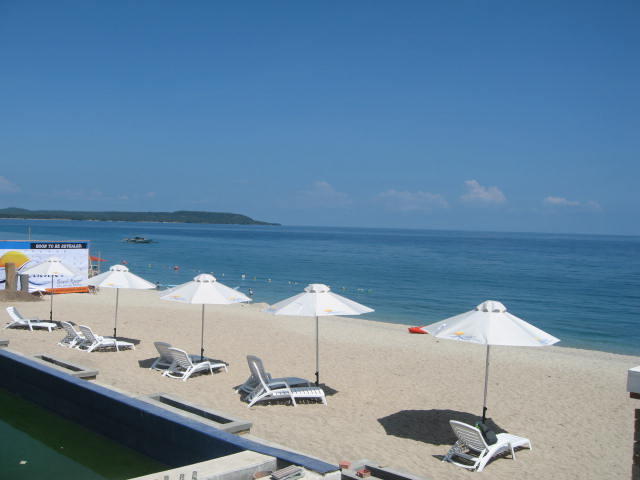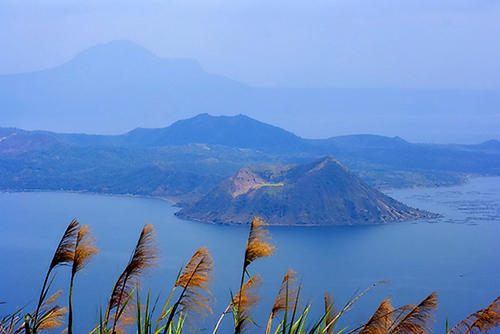Posts Tagged ‘Historical Capital of the Philippines’
CAVITE
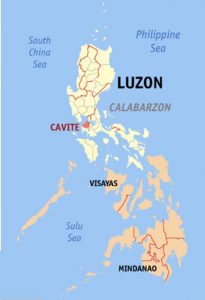 By Eugene Alvin Villar (seav) – English Wikipedia, CC BY-SA 3.0, https://commons.wikimedia.org/w/index.php?curid=372118
By Eugene Alvin Villar (seav) – English Wikipedia, CC BY-SA 3.0, https://commons.wikimedia.org/w/index.php?curid=372118
Cavite is a historic, picturesque and scenic province providing a place conducive to both business and leisure.
Brief History and Historical Sites
In 1872, a mutiny by disgruntled navy men in Cavite led to a large-scale crackdown on reformers and liberals. Three Filipino priests – Jose Burgos, Mariano Gomez and Jacinto Zamora- were executed and dozens others sent into exile. In 1896, after the outbreak of the Philippine Revolution, Cavite took center stage as thousands of Katipuneros liberated most of the province’s towns.
On August 26, 1896, when the Philippine revolution against Spain broke out, Cavite became a bloody theater war. Led by Emilio Aguinaldo, Cavitenos made surprise attacks on the Spanish headquarters and soon liberated the whole province.
Emilio Aguinaldo, the first Philippine president came from the town of Kawit and directed the conduct of the Revolution from his base in the province. He agreed to go into exile in December 1897, but returned to the Philippines in May 1898. On June 12, he declared Philippine independence from the balcony of his home in Kawit.
The Americans established civil government in the province in 1901. The naval station in Sangley Point became the chief American naval base in the country.
The Japanese targeted the naval base during the first wave of attacks on military installations in the Philippines.
Cavite and its people, what they are today, and what will be tomorrow will remain their infinity, as a place with a glorious history, and a people fortified with strength to live and die for a worthy cause. Read More: cavite.gov.ph
Fort San Felipe
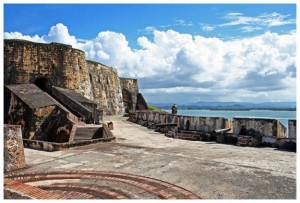 Photo from: wowcavite.com
Photo from: wowcavite.com
Fort San Felipe is an old structure dating back to 1609 when the Spaniards built it to to protect part of the then growing city. The structure is made of granite blocks with walls approximately 30 feet high. A wide stairway leads to the top of the fort where a concrete house structure could be found. Naval memorabilia including antique cannons and cannon balls decorate the lawns.
Sangley Point
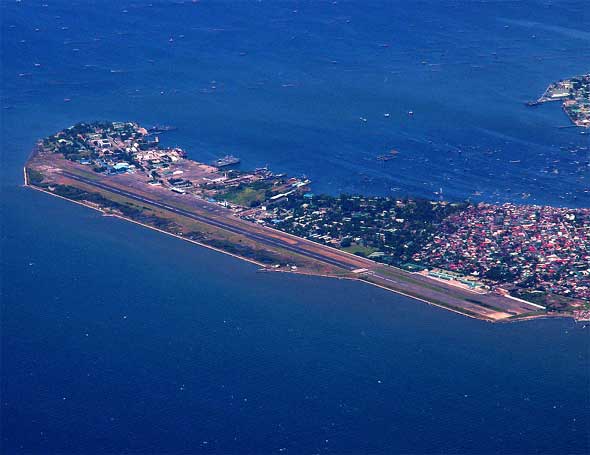 Photo from: tourism-philippines.com
Photo from: tourism-philippines.com
Naval Station Sangley Point was a communication and hospital facility of the United States Navy which occupied the northern portion of the Cavite City peninsula and is surrounded by Manila Bay, approximately eight miles southwest of Manila, the Philippines. The station was a part of the Cavite Naval Shipyard across the peninsula. The naval station had a runway that was built after World War II, which was used by U.S. Navy patrol planes. It was also used extensively during the Vietnam War. The naval station was turned over to the Philippine government in 1971. It is now operated by the Philippine Air Force and Philippine Navy.
Corregidor Island
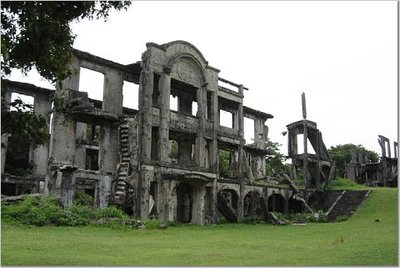 Photo from: mhea-journey.co.cc
Photo from: mhea-journey.co.cc
Corregidor Island, locally called Isla ng Corregidor, is a lofty island located at the entrance of Manila Bay in southwestern part of Luzon Island in the Philippines. Due to this location, Corregidor was fortified with several coastal artillery and ammunition magazines to defend the entrance of Manila Bay and the City of Manila, from attacks by enemy warships in the event of war. Located 48 kilometres (30 mi) inland, Manila has been the largest city and the most important seaport in the Philippines for centuries—from the colonial rule of Spain, the United States, and Japan and after the establishment of the Republic of the Philippines in 1946.
Corregidor (Fort Mills) is the largest of the islands that formed the harbor defenses of Manila Bay together with El Fraile Island (Fort Drum), Caballo Island (Fort Hughes) and Carabao Island (Fort Frank), which were all fortified during the American occupation of the country. The island was also the site of a small military airfield, as part of the defense.
During World War II, Corregidor played an important role during the invasion and liberation of the Philippines from Japanese forces. Heavily bombarded in the latter part of the war, the ruins left on the island serve as a military memorial to American, Filipino and Japanese soldiers who served or lost their lives on the island. Corregidor is one of the important historic and tourist sites in the country.
Corregidor, the famous last bastion of Philippine-American defense forces, is part of Cavite City.
Corregidor is an island fortress where Filipino and American forces fought against the Japanese invaders in 1942. It has become a tourist attraction with tunnels, cannons and other war structures still well-preserved. The famous line of General Douglas McArthur said is associated with Corregidor: “I shall return!” – wikipedia.org and cavite.gov.ph
Zapote Bridge
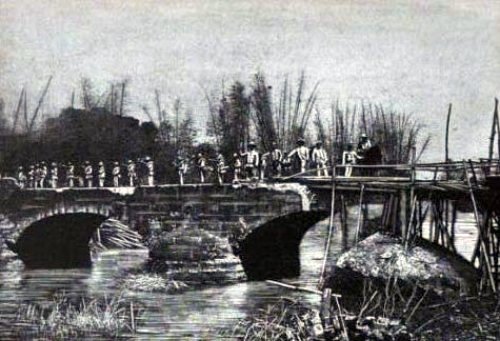 Photo from: philippineamericanwar.webs.com
Photo from: philippineamericanwar.webs.com
The Battle of Zapote Bridge was fought on February 17, 1897, as part of the Philippine Revolution. Filipino revolutionary forces headed by General Emilio Aguinaldo defeated Spanish forces under Governor-General Camilo de Polavieja. In this battle, General Edilberto Evangelista, a Filipino civil engineer, trench builder and member of the Katipunan, was killed. Aguinaldo started to liberate Cavite towns little by little following the victory at Zapote Bridge.
Battle of Alapan
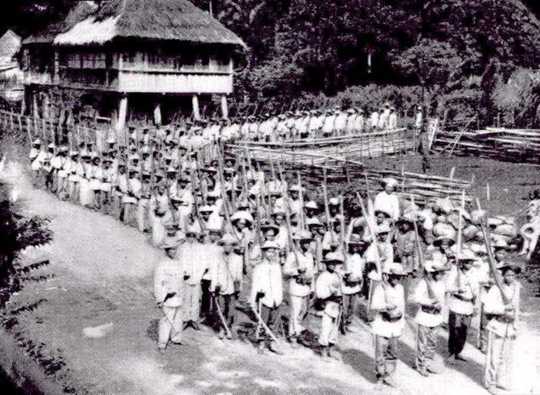 Photo from: socyberty.com
Photo from: socyberty.com
Gen. Aguinaldo’s first victory was in the battle of Alapan, Imus on May, 1898. The Filipino national flag was hoisted for the first time following the victory.
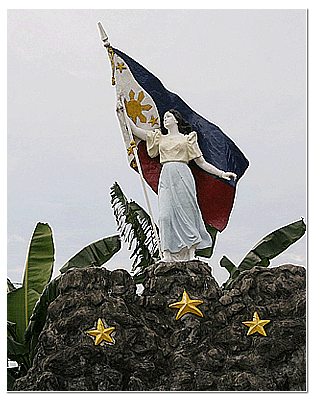 Photo from: imus.gov.ph
Photo from: imus.gov.ph
“The Battle site is within the compound of Alapan Elementary School in Imus. Highlighted by a 90-foot tall flag pole, the marker features the statue of a woman called “Inang Bayan” standing on three large rocks and holding up the Philippines Flag.” – cavite.info
Battle of Binakayan
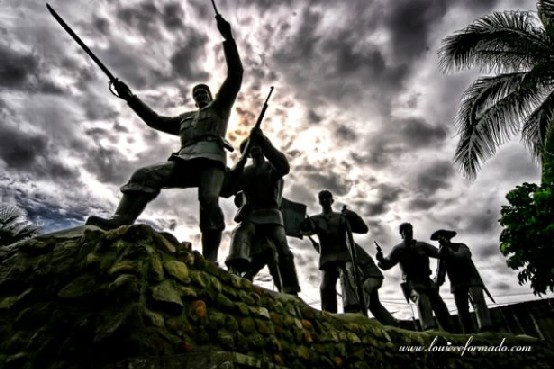 Photo from: cavitetourismboard.org
Photo from: cavitetourismboard.org
The Battle of Binakayan was the first decisive victory of Emilio Aguinaldo-led Filipino revolutionaries over the Spaniards in Cavite. The battle took place in Binakayan, a barrio in Kawit and Dalahican, a barrio in Noveleta on 9-11 November 1896.
The victory boosted the morale of the revolutionaries and further elevated Aguinaldo’s status as an excellent leader among revolutionaries. Succeeding victories of his forces followed and Cavite was virtually liberated from the Spaniards, saved for Sangley Point where Spain had a naval base. Gregoria Montoya, Generals Candido Tria Tirona and Simeon Latorre, who died in the battle, instantly became heroes. Half a thousand Spanish soldiers died and many Spanish military weapons were captured. – wikipedia.org
Tejeros Convention
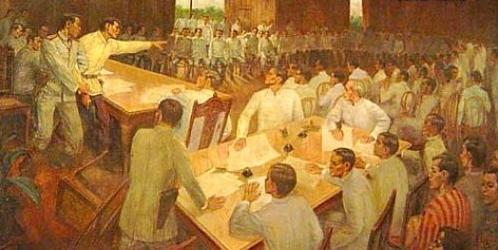 Photo from: filipinoscribbles.wordpress.com
Photo from: filipinoscribbles.wordpress.com
The Tejeros Convention (also referred to as Tejeros Congress or Tejeros Assembly), held at Tejeros (now General Trias) in Cavite on 22 March 1897, was the meeting that brought together the members of both the Magdalo and Magdiwang factions of the Katipunan. This is considered as the first Presidential and Vice Presidential election in the history of the Philippines.
Aguinaldo Shrine
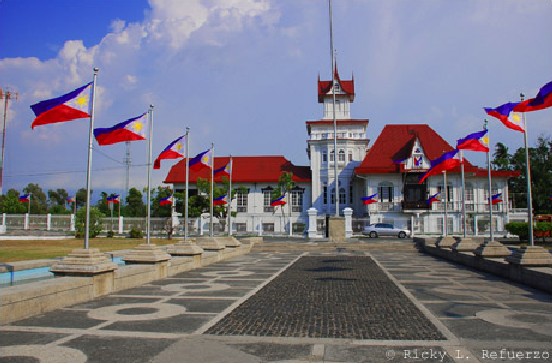 Photo from: masterbetong.net
Photo from: masterbetong.net
Aguinaldo Shrine is the ancestral home of Emilio Aguinaldo, the first president of the Republic of the Philippines and is a national shrine. It is a museum that is open to all visitors and located in Kawit, Cavite.
Every year, the Philippine flag is raised here by the president of the country to commemorate Independence day as this was the place where the declaration of Independence from Spain was proclaimed on June 12, 1898.
TABLE OF CONTENTS
Cavite – the Historical Capital of the Philippines
Other Visitors Also Viewed:
Rahugan Festival Celebrates Strength in Unity
Join the Bagasbas Summer Surf Festival
Anihan Festival – Thanksgiving for a Good Harvest
Bila-Bila Festival is a Celebration Honoring the Butterflies
Siitan River and the Enjoyable Siitan River Cruise
The Enchanting Libtec Underground River
